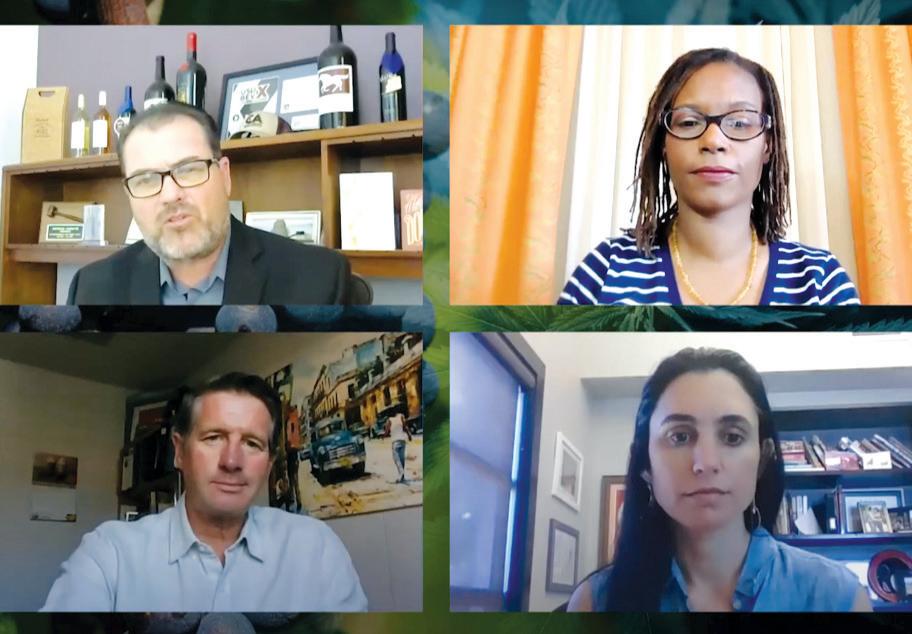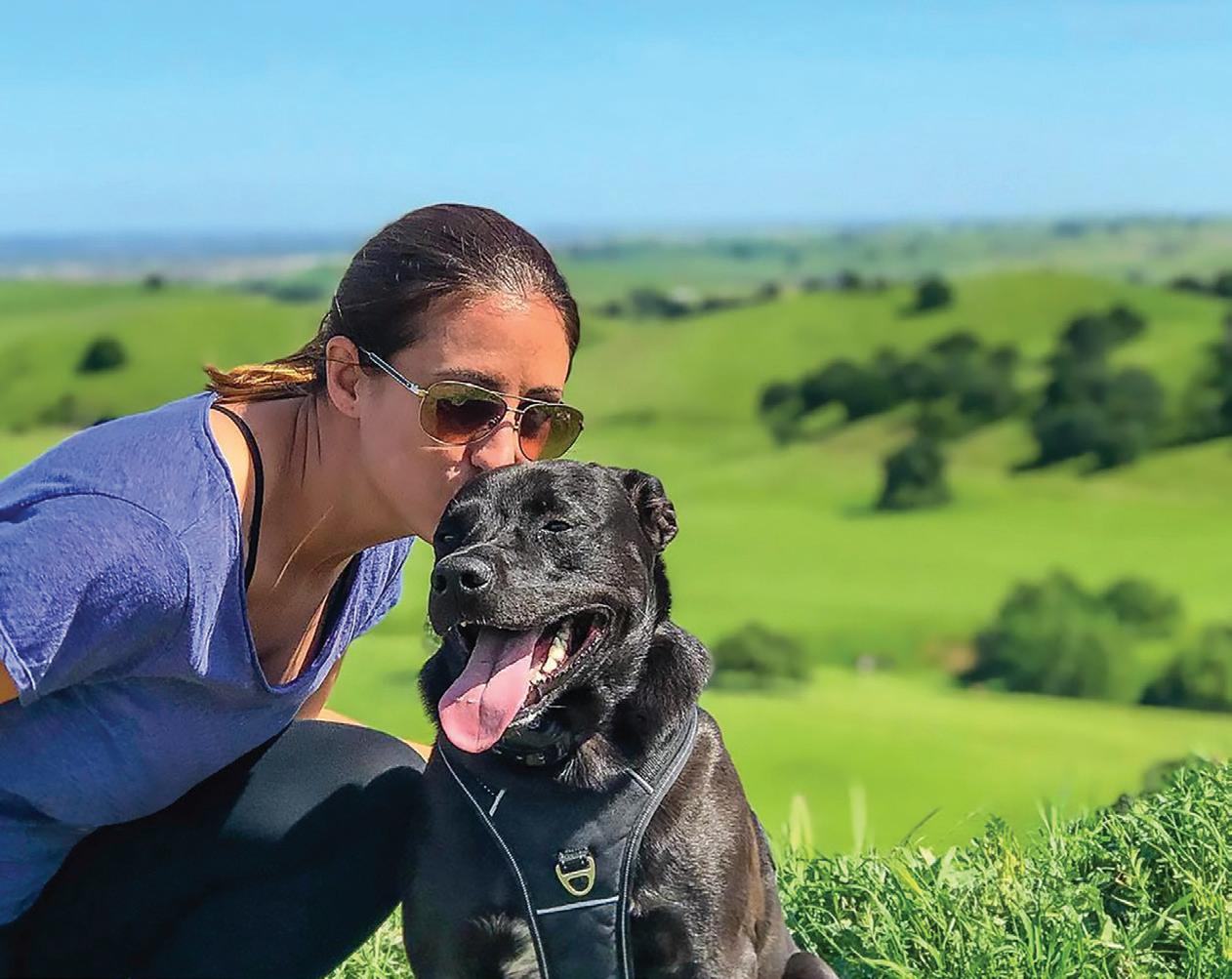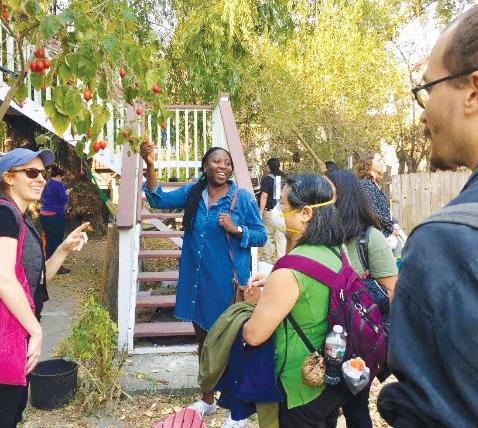
3 minute read
WHAT THE FORK
SKEWERED The chicken kababs plate at Mama Lamees.
Mama Lamees
Photos by Jeffery Edalatpour
Emeryville’s authentic Palestinian food BY JEFFREY EDALATPOUR L amees Dahbour beamed a smile at me as she gathered my order. The chef and owner of Mama Lamees, she took the time to that both pita and rice accompany the chicken kababs. Since opening her kiosk in 2019, Mama Lamees has received local and labor,” Dahbour said. But for her, labor means something more than merely finding someone to take orders or to prep food in the kitchen. It means finding explain what was inside each container national press notices for the recipes loyal employees who not only believe in while one of her employees answered Dahbour learned from her mother the product but who will also present the the telephone. When she opened the and grandmother. In Bon Appétit, dishes with the chef’s careful instructions. lid on the falafel plate, it was perfectly Amiel Stanek described the mnazzalet For the first six months, that part of the composed. Each serving of hummus zahra as “the most comforting roasted business was stable. But after a twoand mutabal—a dip made from cauliflower lounging in spiced labneh.” week closure due to the initial Covid-19 eggplant and tahini—glistened with But to achieve these comforting flavors, lockdown, many of the employees at freshly cut onions and parsley. the cooking is time-consuming and Mama Lamees didn’t return to work.
In a separate container, basmati labor-intensive. When we spoke on the Dahbour recalled that, “We had to start rice had turned a golden color after phone a few days after my visit, the chef over again to find people.” simmering in a seasoned broth. remembered I’d ordered it. “You can’t After Mama Lamees reached its oneDahbour pointed out that it should be believe how long it takes to get the real year anniversary at the Public Market served with the mnazzalet zahra, fried taste of it,” she said. in August, Dahbour signed a six-month cauliflower stewed in a labaneh—a When she began her year-long extension for her kiosk. While she thick, yogurt-like cheese—and tahini residency at the Emeryville Public admitted that running a small business sauce. She assigned slices of pita bread Market, she worked up to 16 hours a day. isn’t easy, the stand remained open to the falafel plate. And then noted “The hardest part in opening is finding during 2020 as a result of her tenacity. “I’m not a person who gives up easily,” she said, adding: “I’m a single mother with three kids.”
Dahbour described the dishes she makes as authentic Palestinian food. Although she lived in Kuwait before coming to the U.S., the chef said she learned the right way “to cook a Kuwaiti dish and the right way to cook a Palestinian dish. But I never mixed them.” La Cocina, the San Francisco restaurant incubator that helped Dahbour secure the Emeryville kiosk, also published two of her recipes in the organization’s 2019 cookbook We Are La Cocina: Recipes in Pursuit of the American Dream. Dahbour said that one recipe (maqluba) is from Palestine and the other (samak mashwe bilforn) is Kuwaiti.
She spoke confidently about the subtle distinctions between similar dishes from different Middle Eastern countries. “We make grape leaves in Palestine. We stuff them with meat and rice and parsley,” she said. In Lebanon, they make the same dish—but it’s vegetarian. “They serve it cold and we serve it as a hot dish,” she said.
Her mujaddarah, a lentil, rice and onion dish, has an equivalent in Egypt called koshari. “It’s the most flavorful, lovely dish in Egypt,” Dahbour said. “They add one other component to it, a small pasta. Otherwise, it’s the same.”
Earlier this year, Ligaya Mishan wrote a New York Times article titled “The Rise of Palestinian Food.” In it she mentioned a number of recent cookbooks that present the following problem, “How to speak of the cuisine, given the political context?” The eloquent answer Mishan articulated for the cookbook authors was, “If cooking is in part an act of preservation, a way to sustain cultural identity across time and distance, it is also an art of resilience, demanding the ability to adapt.”
In the context of this troubled and troubling year, Dahbour stayed true to her original vision: to serve the traditional flavors and dishes of her Palestinian heritage. “I want people to have the real taste,” she said. “I’m cooking the same way my grandma used to cook.”







